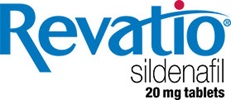Do not take REVATIO if you:
- take medicines called nitrate.
- take riociguat, a guanylate cyclase stimulator medicine.
- are allergic to sildenafil or any of the ingredients in REVATIO.
What is the most important information I should know about REVATIO?
Never take REVATIO with any nitrate or guanylate cyclase stimulator medicines.
- Your blood pressure could drop quickly to an unsafe level.
Nitrates include:
- Medicines that treat chest pain (angina)
- Nitroglycerin in any form including tablets, patches, sprays, and ointments
- Isosorbide mononitrate or dinitrate
- Street drugs called “poppers” (amyl nitrate, butyl nitrate or nitrite)
Guanylate cyclase stimulators include:
- Riociguat, a medicine that treats pulmonary arterial hypertension and chronic thromboembolic pulmonary hypertension.
Ask your healthcare provider or pharmacist if you are not sure if you are taking a nitrate or a guanylate cyclase stimulator medicine.
Before taking REVATIO, tell your healthcare provider about all of your medical conditions, including if you:
- have low blood pressure
- have heart problems
- have pulmonary veno-occlusive disease (PVOD)
- have bleeding problems or a stomach (peptic) ulcer. It is not known if REVATIO is safe in people with bleeding problems or who have a stomach ulcer.
- have an eye problem called retinitis pigmentosa
- have ever had sudden loss of vision in one or both eyes, including an eye problem called non-arteritic anterior ischemic optic neuropathy (NAION)
- have ever had hearing problems such as ringing in the ears, dizziness, or loss of hearing
- have a deformed penis shape or Peyronie’s disease
- have any blood cell problems such as sickle cell anemia
- are pregnant or plan to become pregnant. It is not known if REVATIO will harm your unborn baby.
- are breastfeeding or plan to breastfeed. REVATIO passes into your breast milk. It is not known if it can harm your baby. Talk with your healthcare provider about the best way to feed your baby during treatment with REVATIO.
Tell your healthcare provider about all of the medicines you take, including prescription and over-the-counter medicines, vitamins, and herbal supplements. REVATIO and certain other medicines may affect each other and can cause side effects.
Especially tell your healthcare provider if you take:
- nitrates or guanylate cyclase stimulators. See “What is the most important information I should know about REVATIO?”
- medicines to treat high blood pressure
- medicines for erectile dysfunction (impotence). REVATIO contains sildenafil, which is the same medicine found in another medicine called VIAGRA®. VIAGRA is used for the treatment of erectile dysfunction. Do not take VIAGRA or other PDE-5 inhibitors during treatment with REVATIO.
What are the possible side effects of REVATIO?
REVATIO may cause serious side effects, including:
- See “What is the most important information I should know about REVATIO?”
- Decreased blood pressure. REVATIO may cause low blood pressure that lasts for a short time. If you take medicines to treat high blood pressure, your healthcare provider should monitor your blood pressure during treatment with REVATIO.
- Decreased eyesight or permanent loss of vision in one or both eyes can be a sign of non-arteritic anterior ischemic optic neuropathy (NAION). Most people who develop NAION have certain risk factors. You can ask your healthcare provider if you have questions about risk factors for NAION. If you notice a sudden decrease or loss of vision in one or both eyes during treatment with REVATIO, contact your healthcare provider right away.
- Sudden decrease or loss of hearing, sometimes with ringing in the ears and dizziness. If you notice a sudden decrease or loss of hearing during treatment with REVATIO, contact your healthcare provider right away.
- In men, an erection that lasts for more than 4 hours (priapism). If you have an erection, with or without pain, that lasts more than 4 hours, contact your healthcare provider or get emergency medical help right away. A painful erection that lasts more than 6 hours must be treated right away or you can have lasting damage to your penis, including the inability to have erections.
The most common side effects of REVATIO in adults include:
- nosebleeds
- headache
- upset stomach
- getting red or hot in the face (flushing)
- arm or leg pain
- muscle aches and pain
- back pain
- diarrhea
Indication
REVATIO is a prescription medicine used to treat pulmonary arterial hypertension (PAH). PAH is a type of high blood pressure in the arteries of your lungs. REVATIO may be used in adults to improve your ability to exercise and help slow down the worsening of your physical condition.
Please see Full Prescribing Information and Patient Information.


